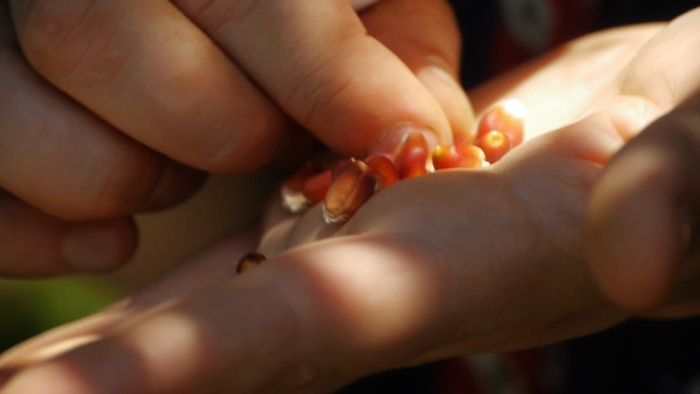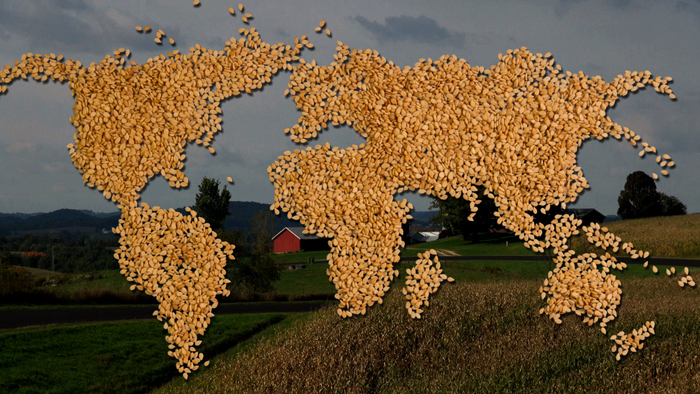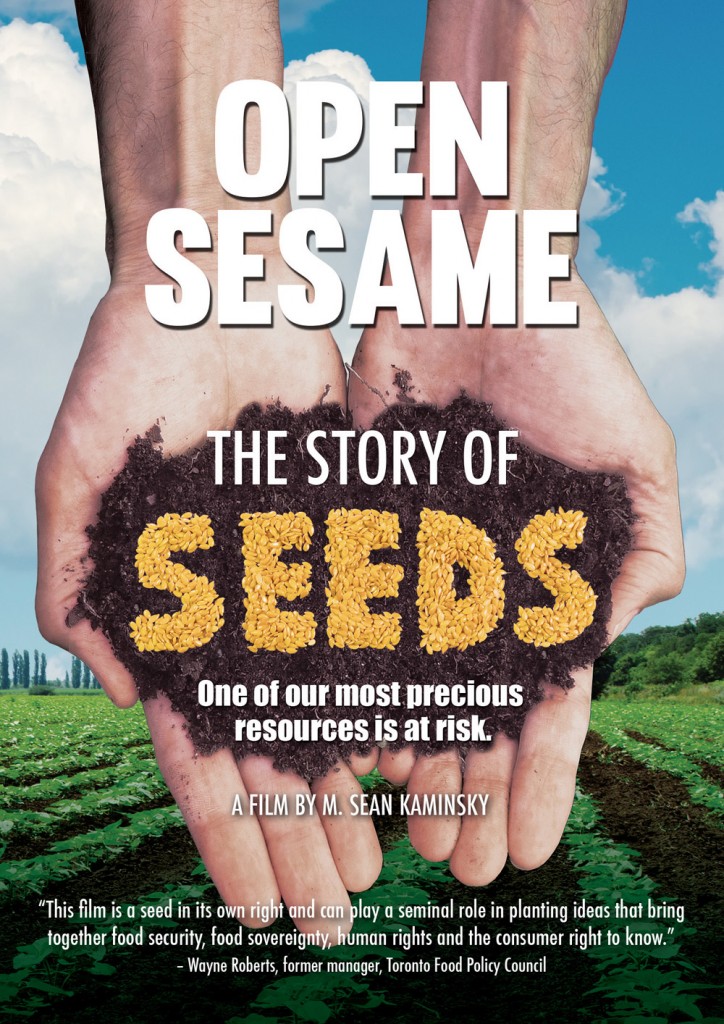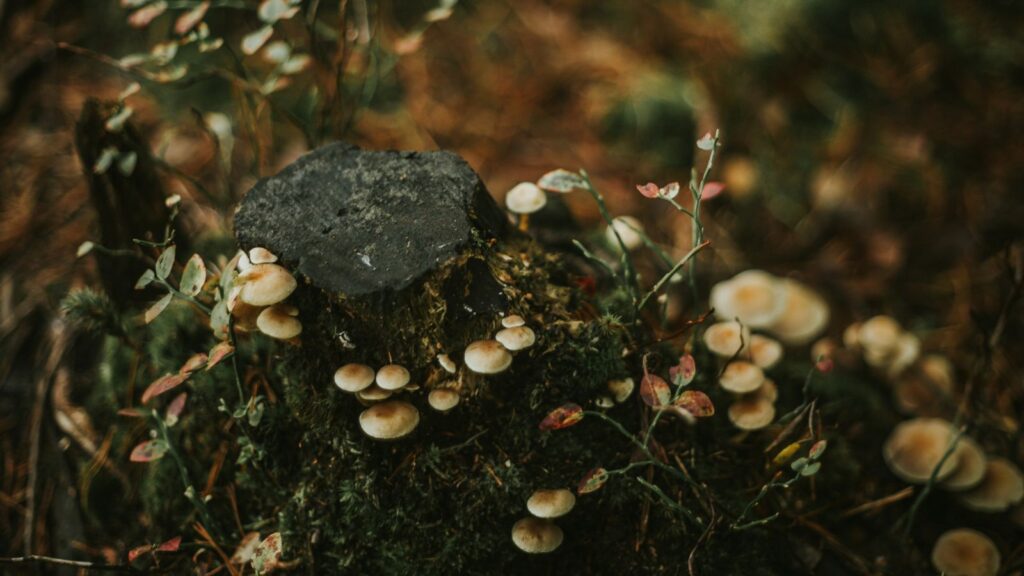Today, backlash against Monsanto is relatively common — a quick Google search of “Monsanto corruption” yields 626,000 results. But while many lament the advent of GMOs and decry Monsanto’s patent games, the importance of seed diversity is often missing from the discussion. Not only can seed diversity protect us from the rapidly changing climate, but it offers us a unique look into our collective history.
Sean Kaminsky is one individual who recognizes the importance of seeds. In fact, he’s so passionate about the subject that he made a feature length documentary about seeds and their history, Open Sesame: The Story of Seeds. [View trailer here.]
I sat down with Sean to discuss seeds and their impact, the consequences of patent-crazy companies, and what we can do to protect our food source.
Marcie Gainer: Why is seed diversity important?
Sean Kaminsky: Many cultures consider seeds sacred and treat them accordingly. Techno-industrial agriculture has lost that reverence, but it doesn’t take a university research study to tell you that without seeds, we’d be in serious trouble. Upwards of 90% of our food comes from seed either directly or indirectly.
Climate change will continue to create growing conditions that are more extreme and unpredictable than at any time in our agricultural past. Seed diversity gives us flexibility to adapt. For example, one variety might do well in dry conditions, while another resists funguses during wet conditions or is unpalatable to a specific pest. With each of these examples, it’s very possible that no other variety in the world has that identical trait.
When seed varieties become extinct, we lose the genetics that go along with those varieties. But not only do we lose the genetic diversity, we lose the story behind those seeds. We lose their unique colors and flavors. We lose the cultural diversity and the history behind them. When you consider that it may have taken hundreds of years or more of painstaking care by our ancestors to nurture these varieties, that’s a real tragedy and it puts our food supply at risk.
Most people are familiar with the great potato famine. A single variety of potato was planted which lacked resistance to a rot called Phytophthora infestans. Because of over reliance on one crop, a crisis ensued. You might think we’d have learned our lesson, but industrialized agriculture remains heavily reliant on monocultures. The default mode of industrial agriculture is to plant one crop variety on millions of acres over and over again. This ideology can be efficient for an assembly line of machine parts, but it’s problematic for an agricultural system.
Rather than utilizing diversity and agro-ecological methods to grow healthy crops, reliance is placed on chemical herbicides and pesticides. Not only does this damage our health and the environment, but also it’s not working very well anymore. We’ve been pumping increasing amounts of chemicals on farmland for the last fifty or sixty years and every decade farmers still need to use more. I learned this first hand talking to farmers when making my film ‘Open Sesame: The Story of Seeds.’ Weeds are becoming resistant. Pests are becoming increasingly voracious as the climate warms. The common response to this is to invent new chemicals or to develop new genetically modified seeds that are resistant to those chemicals so we can use them in even higher quantities. But with a changing climate and a growing population, we need seed diversity. We need to preserve our older varieties and we need to keep adapting those varieties to our changing climate using innovative, sustainable techniques.
What has led us to the current lack of diversity?
For twelve thousand years seeds were saved, traded, bartered and borrowed by farmers and small growers. Throughout most of this period, anyone with the desire and a little bit of know-how could adapt seeds based on their individual growing conditions and preferences. This human input by thousands of our ancestors has been the biggest driver of diversity in agricultural history. This open experimentation led to a massive amount of diversity as varieties were selected for traits such as color, taste, adaptability to a region and resistance against pests to name just a few.
Seeds were perhaps the original open source and seed diversity thrived as a result. But in the past one hundred years the situation shifted dramatically. It began with a type of limited protection on seeds in the 1930s – these were licenses of a sort and it ended up with full-fledged patenting of seeds after the historic Diamond v. Chakrabarty case in 1980.
In this landmark case, the courts ruled that life could be patented with the same type of strong ownership afforded to industrial items such as proprietary electronics or mechanical parts. There were many factors over the past century that led to our loss of diversity, but without this key event, we would likely be in quite a different place. It’s informative to consider that of the current three largest seed companies in the world: Monsanto, Syngenta and Dupont, none of these chemical and pharmaceutical companies sold seeds until after Diamond v. Chakrabarty.
Rather than spend money on developing open pollinated varieties (which have seeds that can be saved) our industrial model concentrates on developing varieties that can’t be saved or shared. Organic research has been all but ignored. The institutionalization of this system has caused such a massive imbalance that for the time being, we have no other choice. If these large seed companies stopped producing seeds, it would be a global catastrophe because we don’t have small seed producers to replace them. We don’t have a diverse seed supply to replace these massive monoculture producers. At least not yet.
But don’t seed companies need patents to protect their inventions?
It makes sense that plant breeders deserve compensation for their work. However, a patent is an overprotection that ultimately diminishes diversity. There are other successful commercial sectors that have avoided such prohibitive legal protections. For example: fashion.
The courts decided long ago that once a clothing design was manufactured into three-dimensional form, it was no longer protected by copyright. Their reasoning was that clothes were utilitarian items that would be harmed by copyright law. Manufactured designs are free to be borrowed, improved upon or even just plain copied by anyone for any purpose. (Just like all seeds once were). Yet, despite this lack of copy protection, fashion still manages to be a thriving trillion-dollar industry. Designing clothes and growing food are two very different undertakings, but it’s unfortunate that the courts didn’t give our food supply the same foresight and consideration that fashion received.
Even in the highly competitive automobile industry, vanguards such as Elon Musk at Tesla Motors are giving away their patents to proprietary electric car components. His goal is to spur innovation; to create the greatest technical advances possible. In other words, he wants to increase creative diversity.
Our seed supply would also likely have thrived if given the same consideration, yet the opposite occurred. As a result, billions of dollars are spent researching patented, proprietary (often genetically modified) varieties that can’t be improved upon or even studied by anyone except the patent holder for a period of twenty years (when the patent expires).
Twenty years is a long time in agricultural terms, but more importantly seed patenting has helped foster an agricultural economy where seeds are treated as proprietary trade secrets. Public funding for plant breeding has all but dried up and is nearly entirely supplied by the private sector. Research dollars into organic varieties are outnumbered by conventional research 70 to 1. Considering the critical importance of food, there is a huge conflict of interest when research dollars are spent not for the common good but for the private interests of corporations.
What can be done and what are some seed oriented resources that you’d recommend to readers?
From edible chrysanthemums to spigiarelloto to pink ping-pong tomatoes, there is a whole world of diversity just waiting for you to taste, share and perhaps even grow. Make diverse food choices. Processed, packaged foods support a monoculture model of high volume soy and corn production. Even high quality prepared foods can be disappointingly uniform in their ingredients. Diverse, whole foods from local farms support seed diversity and keep the money in your community. When you find a new variety you’ve never heard of before, buy it and if you like it spread the word so that others start broadening their food horizons.
Get out and grow something in your back yard or at a community garden. Try to use organic, open pollinated seed varieties. “Patented and/or genetically modified seeds generally aren’t an issue for the small home gardener. These are primarily sold to large commodity growers at the industrial level. However, hybridized varieties are sold to home growers. There is nothing wrong with hybrids from a health perspective, but if you save seeds from these varieties they won’t grow true to type so they can’t be saved or shared. Open pollinated varieties can be saved and shared with others. Not only does this help maintain seed diversity, it’s also a lot of fun.
When you purchase seeds, buy from companies that grow local (some small seed companies buy from abroad). In the Northeast, the Hudson Valley Seed Library grows seeds that are specifically adapted to their regional growing conditions. They are also involved in field research to develop new varieties. Seed Savers Exchange in Iowa is the world’s largest non-governmental seed bank. They maintain a vast array of varieties and also provide a seed-sharing catalog to their members. If you want to dive deep into seed saving, you might even consider taking a seed saving course such as the one that the Rocky Mountain Seed Alliance offers either online or in-person.
Finally, contact the U.S. Department of Justice and demand that they investigate seed patent contracts and re-investigate the agricultural sector for issues of anti-competition. Food & Water Watch has excellent resources that relate to this issue as well as seed patenting in general. We can and will have a healthy and diverse seed supply when we reach a critical mass of people who demand it. We are getting there slowly, seed by seed and bite by delicious bite.
Sean Kaminsky is the director/producer of “Open Sesame: The Story of Seeds” available on DVD and digital from True Mind http://disinfo.com/product/open-sesame-the-story-of-seeds/. To contact Sean or further information on the film visit www.opensesamemovie.com

















